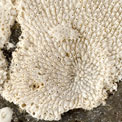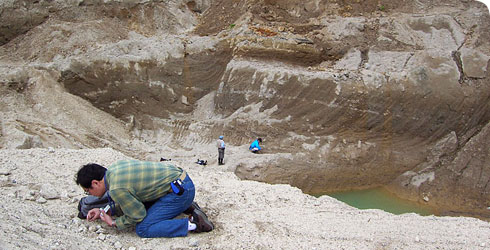Distribution and habitat
This species occurs today in the sea around Japan. It has been found
- in the Pacific Ocean, from Sendai Bay, Honshu, northwards to Kushiro, Hokkaido
- in the Sea of Japan, from Toyama Bay, central Honshu to northern Hokkaido

Cobble from Kuromatsunai encrusted by fossil bryozoans, i.e. C. disjunctus. © P Crabb
More distant records from the Commander Islands and the Aleutians are now thought to represent different but related species.
Cauloramphus disjunctus is also known in the fossil record.
A remarkable fossil locality in Kuromatsunai, Hokkaido contains over a hundred different species of bryozoans growing on pebbles and cobbles in rocks of the Setana Formation. Among these are beautifully preserved colonies of Cauloramphus disjunctus, many with the delicate spines and even the stalked avicularia intact. The fossil locality is Pleistocene in age, dating from roughly 1 million years ago. It consists of gravels deposited when sea levels were high enough to create a channel linking the Sea of Japan with the Pacific Ocean.
